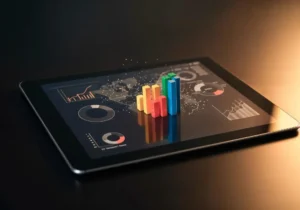Introduction
The world of customer goods is undergoing a remarkable transformation in 2025. Shifts in global markets, technological innovation, and changing cultural values are redefining how people buy, use, and recommend products. Companies that once relied on traditional marketing are now adapting to a faster, more dynamic consumer landscape.
Today’s buyers are more informed, more demanding, and more connected than ever before. Consumer behavior is influenced by everything from social media trends to sustainability concerns. As a result, customer goods companies are rethinking their strategies to meet new expectations. The rapid pace of change means brands must act quickly, adapt continuously, and innovate constantly to remain competitive.
Understanding these changes is no longer optional. It is essential for businesses to thrive. In this article, we will explore what sets today’s consumer landscape apart, which factors matter most, and the key trends shaping the future of customer goods.
What is the Difference?
When we talk about changes in the customer goods market, the first question is—what exactly is different in 2025 compared to the past? The most significant difference lies in how people research, evaluate, and purchase products. Consumer behavior is no longer driven solely by price and convenience. Today, values such as sustainability, ethics, and personalization play a major role in purchasing decisions.
In the past, brands could rely on mass advertising to influence buyers. Now, customers demand transparency. They want to know where their products come from, how they are made, and whether they align with their personal beliefs. Social proof, in the form of online reviews and influencer recommendations, has replaced traditional commercials as the main driver of trust.
Technology has also changed the game. AI-driven product recommendations, personalized shopping experiences, and augmented reality try-on features are becoming standard. These innovations give buyers a tailored experience, reshaping consumer behavior and making the process more interactive.
This shift has created a new type of consumer—one that expects brands to listen, adapt, and respond to their needs in real time. Companies that ignore these expectations risk becoming irrelevant in a market where change is the only constant.
Which Matters More?
As businesses navigate these changes, the big question arises: which matters more—product quality, price, or brand values? In 2025, the answer is not as straightforward as it used to be. Consumer behavior shows that customers now weigh all three factors, but the balance depends on their personal priorities.
For some, quality remains king. A product that delivers on its promises will always find loyal buyers. For others, especially younger generations, brand values matter just as much as performance. They are willing to pay more for goods that are eco-friendly, ethically sourced, and socially responsible. This means that companies must go beyond offering competitive prices—they must stand for something meaningful.
Price is still important, especially in markets where inflation or economic uncertainty affects purchasing power. However, even cost-conscious buyers are looking for more than just a bargain. They want the assurance that their purchase is a good investment, both in terms of durability and ethical impact.
The reality is that in 2025, no single factor dominates. Values, price, and quality all influence consumer behavior. Successful brands are those that achieve the ideal balance by producing goods that are effective, affordable, and consistent with the values of the consumer.
1. The Rise of Conscious Consumerism
The emergence of mindful consumerism in 2025 is one of the biggest changes in consumer behavior. Customers’ increasing willingness to make purchases that support their ethical and environmental convictions is reflected in this trend. Nowadays, people want to know the history of a product rather than just owning it.
At the core of this transformation is sustainability. Consumers now inquire about the origins of items, whether they are composed of renewable resources, and the environmental effects of their manufacture. Brands gain loyalty and trust when they are able to provide clear answers to these issues. Younger people, in particular, see purchasing as a means of supporting issues close to their hearts.
This change has been exacerbated by the digital age. A buyer can easily investigate a company’s labor policies or environmental record with only a few clicks thanks to the abundance of information available online. Facts are more important than catchphrases, therefore companies can no longer hide behind marketing promises. Nowadays, consumers favor companies that are transparent, truthful, and responsible.
Identity is just as much a part of conscious consumerism as ethics. Customers select brands that align with their values and identity. Whether it’s purchasing cruelty-free cosmetics or supporting fair trade coffee, purchase decisions have evolved into an extension of individual convictions. The message in 2025 is unmistakable: goods ought to represent something in addition to fulfilling a purpose.
2. Technology-Driven Personalization
Identity is just as much a part of conscious consumerism as ethics. Customers select brands that align with their values and identity. Whether it’s purchasing cruelty-free cosmetics or supporting fair trade coffee, purchase decisions have evolved into an extension of individual convictions. The message in 2025 is unmistakable: goods ought to represent something in addition to fulfilling a purpose.
This is made feasible in large part by artificial intelligence. Artificial intelligence (AI) helps brands to develop shopping experiences that are unique to each customer, from tailored product recommendations to customized email campaigns. For instance, internet stores promote products that correspond with browsing history, while streaming services recommend shows based on past viewing behavior.
Virtual and augmented reality have also become popular. Nowadays, customers don’t need to go to a store to try on clothing, see furniture in their homes, or test out different hues of makeup. This increases trust in purchasing decisions in addition to making shopping more convenient. These immersive, interactive experiences are having a growing impact on consumer behavior.
With apps that provide location-based recommendations, loyalty benefits, and real-time bargains, mobile commerce is still expanding. speech assistants, which enable users to make purchases with basic speech requests, are also becoming a part of the shopping experience.
This degree of customization is now expected rather than only a luxury. Consumers quickly move on from brands that don’t provide experiences that are relevant to them. Technology is more than just an efficiency tool in 2025; it is the link between a company and its clients, influencing the way that consumer behavior changes and reshaping what it means to shop.




